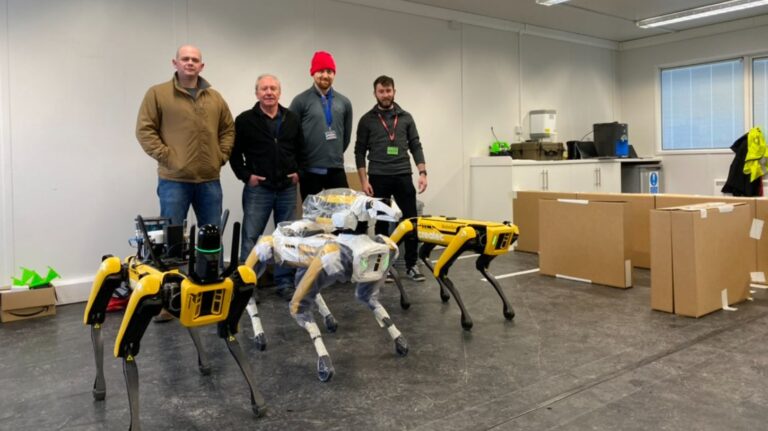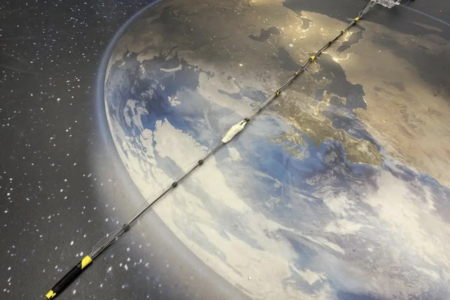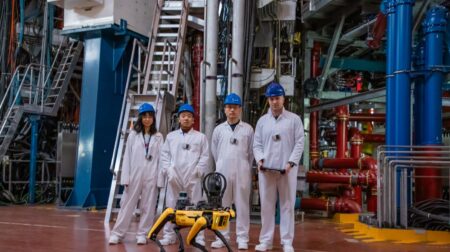A robotic quadruped has successfully negotiated pitch-black conditions and several flights of stairs as part of a two-phase experiment at Dounreay, a small settlement in Scotland that hosts two large nuclear research and testing sites.
The robot dog, named Spot, is produced by American robotics firm Boston Dynamic, and was brought in to map out a four-storey cell at the site, collect radiological data to support decommissioning of the facility and to help the team gain experience on how the robot and survey equipment should be used.
Prior to testing, a wooden mock-up of the evaporator cell entrance was built to enable temporary containment in a clean area. This was to allow the team to test the abilities of the robot and train the operators who would support Spot before deployment.
The dog was covered by a protective suit. Once inside the evaporator cell, it gathered data to give the team a complete 3D map of the area and a dosimetry map to show areas of higher radioactivity.
Bernie Jones, project manager, said: “By doing the initial groundwork, Spot has shown us the hazards that might affect workers who are tasked with the decommissioning.
“We will use the data to ensure that we mitigate those hazards and keep our people safe.”
The Nuclear Decommissioning Authority has said this is one of the first deployments of its kind in western Europe.
Last week, Spot was also deployed at two former Cold War weapons testing facilities deemed unsafe for humans to enter due to decaying concrete.
Professor Melanie Brownridge, NDA technology and innovation director, added: “We were delighted to co-fund and support this exciting work with the team, recognising it’s potential applicability across the NDA group.
“Shared learning and collaboration across our group is essential to the successful delivery of our mission. We have many common challenges and the potential to learn and share the impact, benefitting from innovative approaches such as this is truly significant.”








